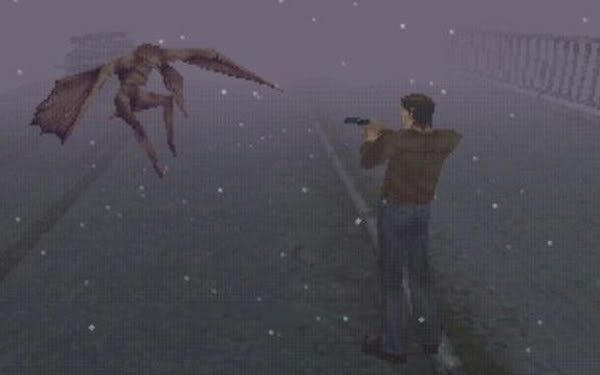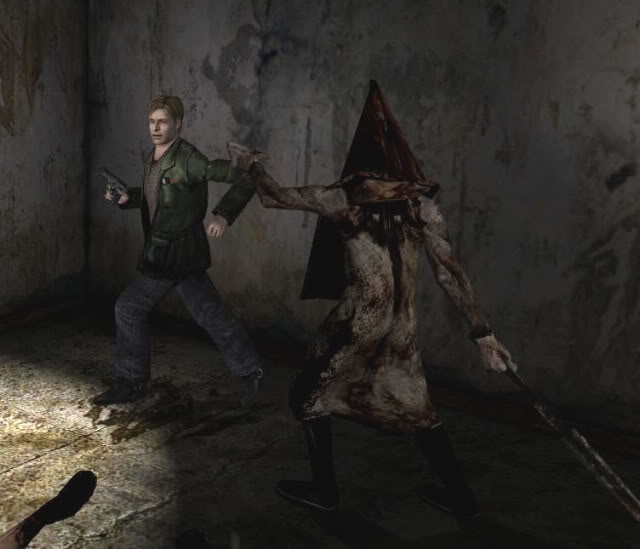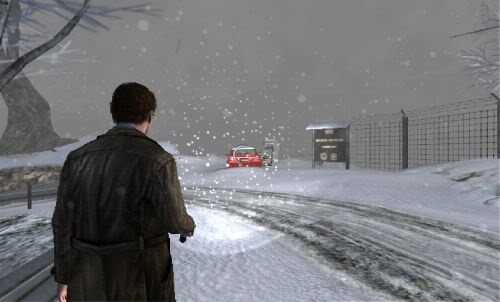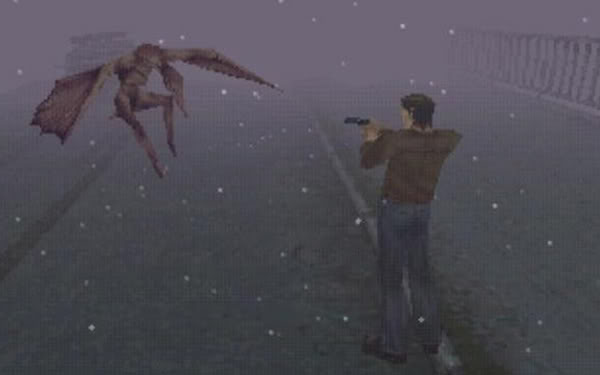
Death and evisceration are common tropes in horror media, but those aren’t the big reasons we are afraid of these experiences. They are the logical conclusion of many horror setpieces, but our fear comes from the anticipation of bad things happening, whether it’s in response to a startling noise or a creepy atmosphere that promises bad things around the corner.
Horror games are naturally distinct from passive media because you are controlling the person in danger instead of merely watching monsters pursue him. Different titles have tried to freak out the player in different ways — from horrifying creatures to oppressive settings — but the one common thread is the threat of death. Atmosphere has always played a part in enhancing the tension of scary experiences, but most horror games tend to rely on the obstacles in your path to cause a reaction.
Is this strictly necessary? Does games have to produce fear through deadly obstacles? The answer is less clear-cut than you might think.
 Resident Evil is the purest form of using gameplay mechanics to produce fear. It pairs limited resources with classic zombie imagery to create a tension that only intensifies as the enemies get harder and grosser. I challenge you not to be nervous when you enter a room only to have the clicking of a Hunter’s footsteps greet you.
Resident Evil is the purest form of using gameplay mechanics to produce fear. It pairs limited resources with classic zombie imagery to create a tension that only intensifies as the enemies get harder and grosser. I challenge you not to be nervous when you enter a room only to have the clicking of a Hunter’s footsteps greet you.
The reason this worked so well is because Capcom designed everything around these elements. The hallways were precisely narrow enough to make it difficult to skirt by. You have weapons at your disposal, but not enough to easily dispatch everything. The type of tension the game created made the zombie motif legitimately scary, primitive polygons be damned.
But when you strip away the gameplay, what you’re left with isn’t that hair-raising. From a design standpoint, the prerendered backgrounds were merely excuses for places to put zombies. The creepy sound design was due to the enemies themselves and not the result of clever placement. The game created a tense atmosphere, but it was the enemies and mechanics that did so. Impressive as it was, this type of design is awfully one-note in hindsight. Once you’ve experienced this type of gameplay, it ceases to be as scary when you experience it again. The tension that accompanies any game remains, but you know what to expect.
When Silent Hill evolved this formula, it dialed down the enemies and pumped up the volume on pure atmosphere. Exploring the streets of the town was a fraught affair, but it wasn’t because of the enemies. After all, the streets themselves were wide open, allowing for easy escape. But the billowing fog and freaky sound effects scare you by playing with your expectations. The setting takes the familiar and makes it alien, which unsettles players. It’s hard to keep it together when you have no idea what could be in the next room, waiting to rip your face off.
 Logically, this presents a problem for those who want to focus on ambiance: If you want to subtly threaten the player, then you have to have a tangible threat to give legitimacy to the atmosphere. Otherwise, why should the player feel afraid? Silent Hill had its share of dangerous enemies, the most famous of which was Pyramid Head from Silent Hill 2.
Logically, this presents a problem for those who want to focus on ambiance: If you want to subtly threaten the player, then you have to have a tangible threat to give legitimacy to the atmosphere. Otherwise, why should the player feel afraid? Silent Hill had its share of dangerous enemies, the most famous of which was Pyramid Head from Silent Hill 2.
For a game that downplayed enemy encounters as much as it did, Konami went to great lengths to build up the presence of Pyramid Head. He casts a long shadow over the game, even if he doesn't appear directly on screen in every scene. His design is twisted and wrong in the same ways that the alternate Silent Hill environments are. His weapon of choice was a giant knife taller than a normal-sized man. And during one of your first encounters with him, he rapes a mannequin-like creature without remorse or emotion. Facing him with nothing but a handgun further cements how dangerous he is. Silent Hill 2 was built on atmosphere, but you still feared running into Pyramid Head around every corner.
So is it possible to make a player afraid without any tangible threats? Fittingly, Silent Hill: Shattered Memories attempts to answer this question. It takes the atmosphere of the series to its logical conclusion and does away with weapons. You still have segments where horrible monsters pursue you, but the game segregates these portions from the town exploration sections, which make up the bulk of the game.
Theoretically, this is a terrible idea: The fact that you know you’re completely safe in these sections should undermine the game’s ability to induce fear. And yet somehow it succeeds. The empty town creates a lonely atmosphere that quickly becomes oppressive. You begin to become paranoid of things that simply don’t exist. Stranger still, you long to go to the other world where there are actual entities to interact with. Sure, you’re still put into a state of panic by horrible creatures, but it’s a more familiar panic that is actually comfortable to experienced survival-horror gamers. The unfamiliarity of the town segments create an unfamiliar type of fear, which is the best kind of scare of them all.

As effective as this is, Shattered Memories still carries some baggage linked to enemies. The legacy of the series feeds into the design of Shattered Memories, giving it a head start in the fear department. If you’ve played any of the prior installments, the games have conditioned you to expect a certain measure of strangeness and danger. This fills in the blanks left by the lack of enemies. Add in the occasional creepy effect, and you realize that the game was built on a legacy of tangible threats, even if most of Shattered Memories doesn’t have many.
The question of "tangible threats versus atmosphere" does not have a simple answer. A creepy setting is always going to be effective when done right, but some kind of baseline of real danger has traditionally been the spark that produces fear. Will horror games transcend traditional game design and find different ways to scare us? Shattered Memories is an encouraging start, but the genre needs to evolve it if wants to break free of the mold that Alone in the Dark and Resident Evil established.


